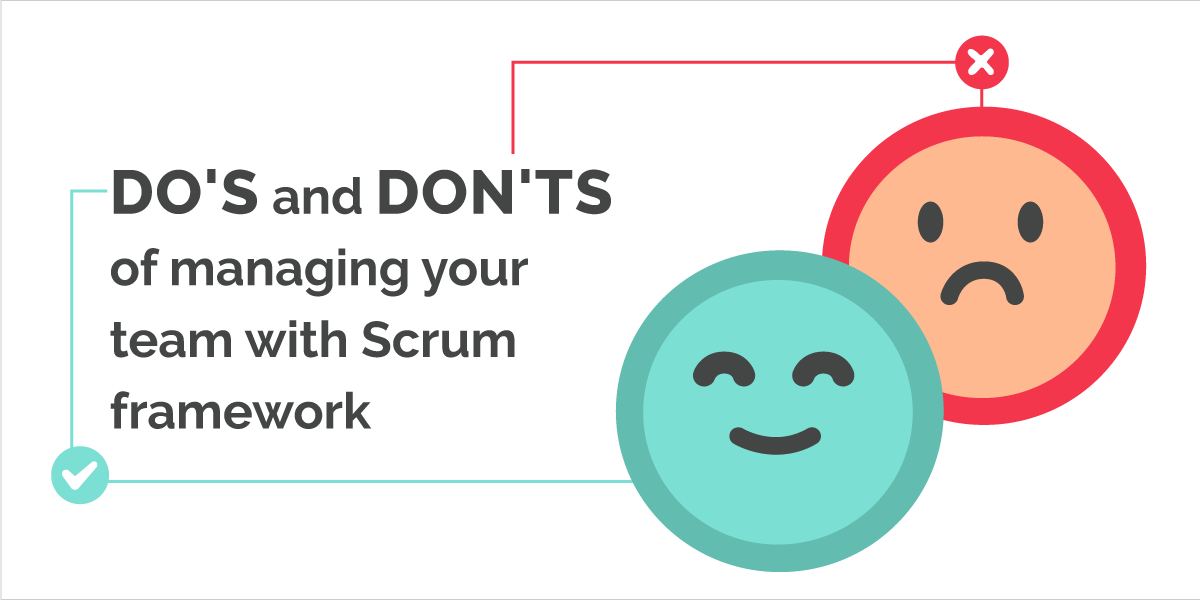Almost every business around the globe relies on Sprint meetings in order to set a direction for the company, disseminate information, delegate tasks, and review the team’s performance. However, most meetings tend to drag on way longer than required, adversely affecting the productivity and the profitability of the organization.
According to an article published in the Harvard Business Review, weekly meetings can cost an organization nearly 300 thousand work hours a year, hindering the staff productivity.
Everyone appreciates well-planned and productive Sprint meetings that stick to the agenda and stay focused towards the Sprint Goal. If you often play the role of a Sprint meeting facilitator, here are seven robust ways that will help you keep the meetings on track.
- Set Clear Objectives
Sprint meetings can be a massive waste of time if they lack a clear purpose or objective. According to a survey conducted by Attentiv, a software company, 63 percent of meetings have no planned agenda, causing a waste of resources and adversely affecting the organizational productivity.
Define the purpose and set a tight time-bound agenda for the Sprint meeting, clearly stating the person who will serve as the facilitator, the time allocated for each item on the agenda, and the desired outcome.
Craft your agenda around your objective, enabling you to involve a maximum number of participants throughout the duration of the meeting. Moreover, remember to distribute a copy of the agenda well in advance, enabling the participants to come prepared.
For instance, if the purpose of the meeting is to review your team’s performance, inform the pertinent team members in advance about the topic of discussion and the time allotted to each of them. This will enable you to keep the meeting moving at a good pace.
Similarly, if you are planning an ‘update session’ for the major stakeholders of the organization, ask the relevant team members to prepare a time-bound presentation on the synopsis of the project, the current impediments and the plans to overcome them, the future vision, and the current accomplishments.
- Create a Distraction-Free Environment
Discourage participants from using laptops, smartphones, or other devices for taking notes during the meeting, enabling them to concentrate on the discussion and contribute their ideas effectively.
Research has proven that taking written notes improves your ability to stay focused on the topic and decide what’s important. You may ask the participants to deposit their mobile phones in a basket at the entrance to prevent them from getting distracted by the phone calls, emails, and messages.
Reserve a room and make sure the necessary equipment and the must-have resources for conducting productive meetings are arranged well in advance.
- Involve the Relevant Teammates
Keep meetings relevant for all the participants by involving only those who have a direct input on the topic of discussion. The people involved in the meeting must fall into three categories, namely the doers, the decision-makers, and the impacted parties such as the customers and the vendors.
It is also crucial to invite the right number of people, enabling you to have enough diversity of opinion while preventing chaos.
For instance, if the Sprint meeting is merely being conducted to update the senior management regarding the status of a project, it is advisable to email him/her the meeting summary.
Before making a list of the participants, go through the meeting agenda and ask yourself the following questions:
– Which team members need to be involved and what contributions can they make?
– Is an external subject-matter expert needed?
Well-known technology firms, namely Google and Apple follow the 10-person rule when organizing meetings, enabling only the required participants to attend and leaving the uninvited employees to focus on their objectives.
- Maintain a Fair and Open Forum
As a facilitator, it is crucial for you to maintain a fair, open, and a respectful meeting tone, encouraging your team members to participate in the discussions. Though a difference of opinions trigger new ideas and create synergy in the team, it can also be a cause of conflicts and arguments. Moreover, several employees tend to hold back their opinions because they are afraid of stepping on their teammates’ toes.
Avoid such frustrating situations by setting a code of conduct for the Sprint meeting. Remind the team of the meeting’s objective and encourage them to share their opinions by asking the following questions:
– Why do you feel so strongly about this issue or idea?”
– Does any team member see this issue or idea differently?
– Does anyone have any questions pertaining to this subject?
– How will this help us accomplish the meeting objective and the Sprint Goal?
- Encourage the Team to Stick to the Agenda
When it comes to the pain points of a Sprint meeting, its length always tops the list. You may want to stick to the agenda, however, a few ramblers may either want to talk incessantly in order to kill time or speak on a tangent topic that in no way can take the team closer to the Sprint Goal.
As a facilitator, it’s your job to ensure that all the participants are on the same page. People who choose to talk beyond their time limit, go on a tangent, or engage in side conversations with their neighbors are sheer time wasters. Have the following phrases ready to handle such situations tactfully:
– This idea seems interesting. Can we take this up after the meeting?
– Can you email me the details? I need to spend some more time understanding this!
– You seem distracted. Do you want to share something with the group?
Setting a time limit for each item on the agenda can prevent people from digressing from the topic of discussion, encouraging them to stick to the point.
A stand-up meeting or a Daily Scrum is also proven to be extremely effective in enabling the participants to stay on track. According to a study, stand-up meetings promote collaboration and brainstorming sessions, minimizing the time wasted in seated meetings.
Christopher Frank, the Vice President at American Express, recommends the five-word trick to get all the participants of the meeting on the same page. At the beginning of the meeting, each team member is required to answer the question ‘What’s this meeting about?’ using five words or less. This simple exercise can help the team to reiterate the meeting objective and the Sprint Goal, helping them stay focused on the agenda.
- Transition through Each Agenda Item Carefully
Although you are aiming at swiftly completing every item on the agenda, it is quite possible that a few team members haven’t moved along with you to the subsequent topics. These participants are still stuck in the past as their mind is pre-occupied with unattended queries, concerns, or questions.
Before transitioning from one agenda item to another, ask the team to jot down their questions, thoughts, and comments for a discussion after the Sprint meeting. Avoid starting a new point unless you have checked with each participant whether they are clear on the current topic. By doing this you are reducing the chances of any unresolved topic being brought up at a later stage.
Alternatively, you may also request one of the participants to note down the team’s queries to be addressed after the Sprint meeting.
Make careful transitions through each agenda item by asking the following questions:
– Are we ready to move to the next item on the agenda?
– Who will take responsibility for this action item?
– Can one of you note down these questions and suggestions? I would be keen to spend some more time on this!
- Have a Clear Take Home Message
Action items, queries, and suggestions need to be recorded for future reference and accountability. As the Sprint meeting facilitator, you may possibly miss taking notes pertaining to the key points raised during the discussion. Consequently, it is critical to designate a team member to note down the minutes of the meeting for easy reference. The summary must clearly capture and communicate the key details and the responsibilities assigned to each team member with the cut-off date.
For instance, instead of stating ‘John is to research and present information on the top customers,’ mention ‘John is to present a report on the top 30 customers in Canada who have contributed to 70 percent of the business revenue.’
In order to boost the outcome of the Sprint meeting, assign specific tasks to people along with a set time frame. Establishing a direct responsibility individual for each task at the end of the meeting provides public accountability for an individual, sending clear instructions for the team to follow.
Facilitating a Sprint meeting is a skill that every manager must develop. The above-mentioned tips will help you organize productive Sprint meetings, enabling you to make the most of the organization’s resources.







